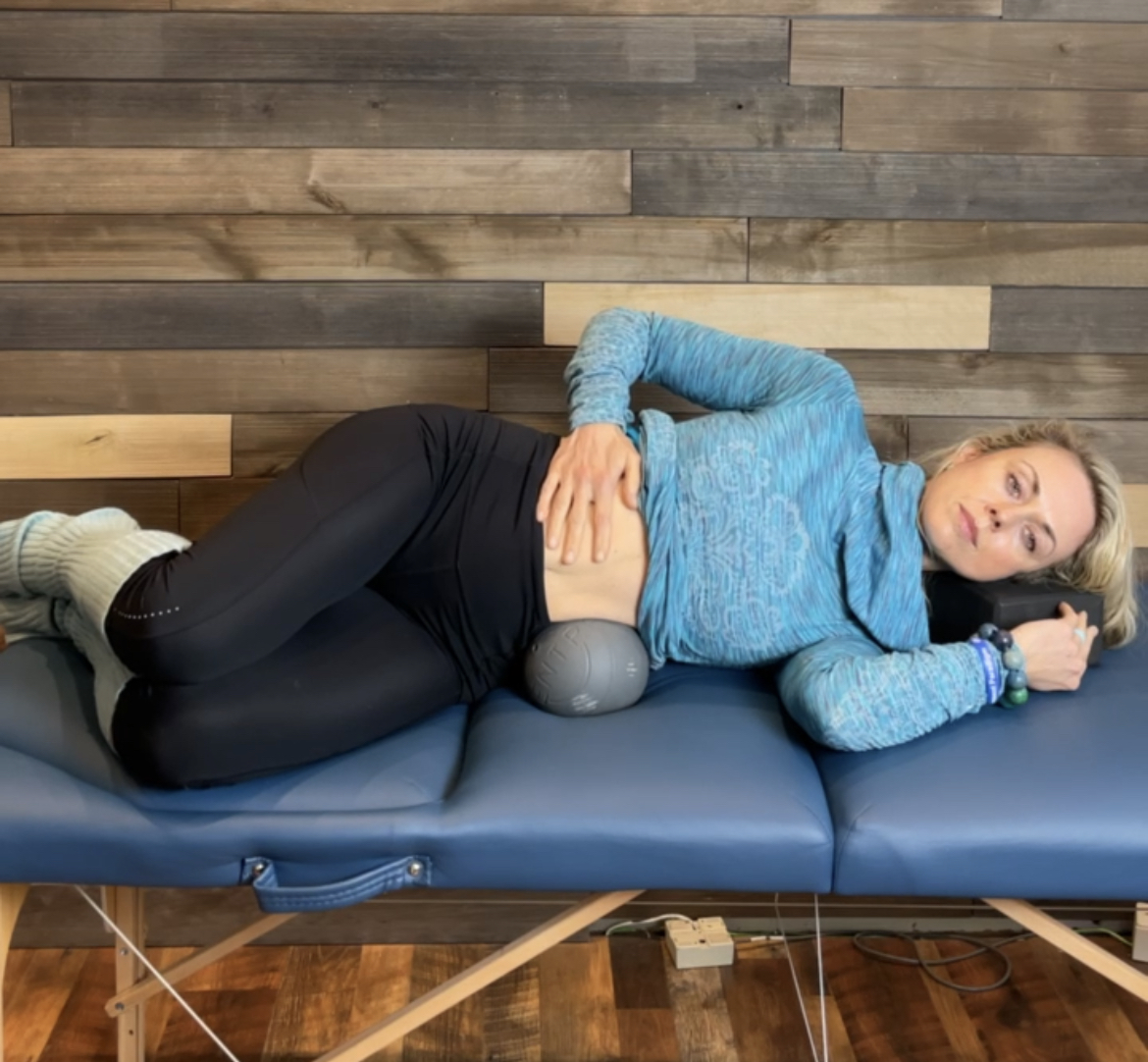Not only can you consciously tap into the power of your vagus nerve; you should.
Healthy vagal activity is associated with better physical and mental well-being. Otherwise, it can cause issues such as inflammation, heart disease, and strokes.
Known as the “wandering nerve” in Latin, it begins in the brainstem and innervates the muscles of the throat, circulation, respiration, digestion, and elimination tracks. It accounts for 80 percent of our parasympathetic, or “rest and digest,” nervous system.
Consider Dr. Stephen Porges, a leading expert in developmental psychophysiology and developmental behavioral neuroscience. His 1994 polyvagal theory recognized the complexity of the nervous system.
There are three ways it expresses itself, starting with a state of social engagement, where we are joyful, present, grounded, and compassionate. Fight or flight, of course, involves frustration and anger, or fear and anxiety. And our “freeze state” is marked by dissociation and hopelessness.
Social engagement, naturally, is what we want to encourage the most for optimal existence. Fortunately, stimulating the vagus nerve can help us achieve that – which we can do through these 10 methods.
1) Cold Exposure
Research shows that acute cold exposure activates the cholinergic neurons in your vagus nerve pathways, stimulating the nerve itself. This can be easily done by slightly changing your shower routine. Just lower the temperature to approximately 15 ℃ for 30 seconds at the end each time to decrease your fight-flight or sympathetic pathways.
2) Deep, Slow Breathing
Diaphragmatic breathing involves fully expanding your abdomen 360 degrees, like a balloon, as you inhale. The key is to take slow breaths with long exhales. This contributes to the release of a neurotransmitter, acetylcholine, from the vagus nerve that catalyzes increased focus and calmness. The most benefits are achieved with 5 to 6 breaths per minute and can be especially helpful in times of stress and anxiety.
3) Chanting, Singing, Humming, Gargling, and Yawning
The muscles of the vocal cords are connected to the vagus nerve. So using them stimulates productive activity. Besides, singing is a great way for people to communicate and connect in general.
Humming, meanwhile, entails an extended exhale that releases acetylcholine. This stimulates the vagus nerve and creates a relaxation response. Additionally, the vibration of humming causes the nasal cavity to release nitric oxide, which increases vasodilation and circulation.
4) Visceral Release
Known as the second brain, your gastrointestinal system is a key area for innervation of the vagus nerve. Eighty percent of our vagus nerve is sensory, providing information to the brain. This amazing gut-brain axis can be influenced by addressing and decreasing any potential tension that we may be holding in the abdomen.
To try alleviating that, lie on your side on top of a soft ball or even a rolled-up towel or blanket. Then gently guide your tissue, skin, fascia, and organs over the ball while breathing diaphragmatically. Do this on your left side, then on your right, for a minimum of 2 minutes or as long as you would like.

5) Meditation
This is a great way to improve vagal tone, decrease your stress response, and improve your mindfulness awareness over time.
6)Probiotics
Think of the gut-brain connection as a highway that can be better paved by probiotics. Two primary strains of bacteria found in fermented vegetables, sometimes known as psychobiotics, have been shown to improve mood, behavior, depression, and anxiety. They are lactobacillus rhamnosus and bifidobacterium longum.
Both can also impact GABA (Gamma Aminobutryic Acid), essentially inhibiting fear and anxiety.
7) Massage
Regular massages or self-massages can enhance positive vagal activity. The same applies to foot reflexology.
8) Exercise
Movement is such a powerful way to improve your vagal tone, become more connected, and enhance happiness. Adding exercise and movement you enjoy into your daily life can make a major difference.
9) Socializing and Laughing
It might seem obvious that connecting with your fellow humans in enjoyable ways is a mood booster. But, few realize this is partially because doing so enhances vagal activity and brings you to a state of social engagement. It is a great way to co-regulate with others. Make sure that, despite current circumstances, you socialize, laugh, and enjoy life as much as possible.
10) The Basic Exercise
Stanley Rosenberg’s basic exercise is a simple way of bringing blood flow to the brain stem, where the vagus nerve originates, and realigning the first two vertebrae. It brings you into a state of social engagement. Most will experience a sense of relaxation after the exercise. To perform this:
- Lie on your back
- Interlace your fingers and bring them behind your head right at the base of your skull
- Move just your eyes to the right until you sigh, swallow, or yawn (typically within 30-60 seconds) and repeat to the other side.
For the record, blinking is allowed.

Any one of these self-care-oriented exercises can be edifying additions to your daily life, even going so far as to induce joy. If you want to live life to the fullest, these are 10 core ways to help you better achieve just that.
References:
References:
Johnson, R. L., & Wilson, C. G. (2018). A review of vagus nerve stimulation as a therapeutic intervention. Journal of Inflammation Research, Volume 11, 203–213. https://doi.org/10.2147/jir.s163248
Jungmann, M., Vencatachellum, S., Van Ryckeghem, D., & Vögele, C. (2018). Effects of cold stimulation on cardiac-vagal activation in healthy participants: Randomized controlled trial. JMIR Formative Research, 2(2), e10257. https://doi.org/10.2196/10257
Lendvai, I. S., Maier, A., Scheele, D., Hurlemann, R., & Kinfe, T. M. (2018). Spotlight on cervical vagus nerve stimulation for the treatment of primary headache disorders: A review. Journal of Pain Research, Volume 11, 1613–1625. https://doi.org/10.2147/jpr.s129202
Lv, H., Zhao, Y.-H., Chen, J.-G., Wang, D.-Y., & Chen, H. (2019). Vagus nerve stimulation for depression: A systematic review. Frontiers in Psychology, 10, 64. https://doi.org/10.3389/fpsyg.2019.00064
Porges, S. W. (2011). The Polyvagal Theory: Neurophysiological Foundations of Emotions, Attachment, Communication, and Self-regulation (Norton Series on Interpersonal Neurobiology). W. W. Norton & Company.
Rosenberg, S. (2017). Accessing the healing power of the vagus nerve: Self-Help exercises for anxiety, depression, trauma, and autism. North Atlantic Books.
Thayer, J. F. (2009). Vagal tone and the inflammatory reflex. Cleveland Clinic Journal of Medicine, 76(4 suppl 2), S23–S26. https://doi.org/10.3949/ccjm.76.s2.05
Wang, H., Lee, I.-S., Braun, C., & Enck, P. (2016). Effect of probiotics on central nervous system functions in animals and humans: A systematic review. Journal of Neurogastroenterology and Motility, 22(4), 589–605. https://doi.org/10.5056/jnm16018
Yuan, H., & Silberstein, S. D. (2015). Vagus nerve and vagus nerve stimulation, a comprehensive review: Part I. Headache: The Journal of Head and Face Pain, 56(1), 71–78. https://doi.org/10.1111/head.12647


